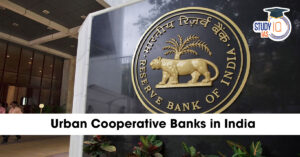Table of Contents
India’s growing urbanisation has intensified the challenge of managing solid waste. Most cities still depend on old, unscientific dumpsites where waste has accumulated for decades, causing severe soil contamination, groundwater pollution, toxic leachate, methane emissions, and recurring landfill fires. To address this, the Ministry of Housing and Urban Affairs (MoHUA) has launched the Dumpsite Remediation Accelerator Programme (DRAP)—a mission-mode initiative aimed at making “Zero Dumpsite India” a reality by September 2026.
DRAP is a fast-track, targeted intervention designed to remediate the largest and most hazardous legacy dumpsites across the country. The programme aligns with the government’s broader vision of Clean Cities, Circular Economy, and Viksit Bharat @2047.
Background: Swachh Bharat Mission–Urban (SBM-U) 2.0
DRAP operates under the umbrella of Swachh Bharat Mission–Urban 2.0, launched on 1 October 2021, which aims for:
-
100% garbage-free cities
-
Scientific management of municipal solid waste
-
Reclamation of dumpsites
-
Strengthening of recycling, segregation, and waste-to-resource systems
SBM-U 2.0 recognises legacy waste remediation as a national priority, and DRAP is the accelerator arm focused on delivering rapid, measurable outcomes.
What is DRAP?
The Dumpsite Remediation Accelerator Programme (DRAP) is a year-long, mission-mode initiative created to fast-track scientific remediation of legacy waste dumps across India.
Key Objectives of DRAP
-
Prioritise high-impact legacy dumpsites
-
Remediate 8.8 crore metric tonnes of old waste
-
Transform dumpsites into green zones, parks, or usable land
-
Ensure no fresh waste dumping at cleared sites
-
Strengthen planning capacity of Urban Local Bodies (ULBs)
-
Achieve Zero Dumpsite India by September–October 2026
Current Status of Dumpsites in India
| Parameter | Data |
|---|---|
| Total dumpsites | 1,428 |
| Fully remediated | 1,048 |
| Work in progress | 380 |
| Priority focus sites | 214 sites in 202 ULBs |
| Total legacy waste | 8.8 crore MT |
Significant progress has been made, yet major metropolitan dumps still pose severe environmental risks.
What is Legacy Waste?
Legacy waste consists of municipal solid waste that has accumulated over years or decades, undergoing partial decomposition. It includes:
-
Biodegradable waste
-
Plastics and packaging materials
-
Construction & demolition waste
-
Metals, ash, dust, and inert material
Legacy dumps are hazardous because they generate:
1. Leachate
A toxic liquid that seeps into soil and contaminates groundwater and nearby water bodies.
2. Landfill Gas
A mixture of methane (CH₄) and carbon dioxide (CO₂), contributing to climate change and posing risks of fires and explosions.
Technology Used in Dumpsite Remediation
1. Biomining / Bioremediation
Microbial processes separate waste into recyclables, soil-like material, and refuse-derived fuel (RDF).
Benefits:
✔ Reduces waste volume
✔ Recovers materials
✔ Reclaims land
2. Biocapping
A layered soil and biological cover is placed on waste heaps to stabilise them and convert the site into a green area.
Benefits:
✔ Controls leachate
✔ Reduces odour and emissions
✔ Helps create green zones
Funding Support for DRAP
The government provides ₹550 per tonne of legacy waste remediated.
Progress So Far
-
₹4,181 crore disbursed to states
-
Supports ₹10,228 crore worth of remediation projects
-
2,484 ULBs in 28 states/UTs benefitted
-
25 crore tonnes of legacy waste cleared
-
7,580+ acres of urban land reclaimed
This reclaimed land is being repurposed into parks, community spaces, bus depots, housing sites, and green belts.
Implementation: The 5P Framework
DRAP uses a strategic 5P approach for effective implementation:
-
Political Leadership
-
Public Finance
-
Public Advocacy
-
Project Management
-
Partnerships (CSR + private sector)
A real-time DRAP Monitoring Portal ensures transparency, progress tracking, and timely decision-making.
Case Example: Bhalswa Landfill, Delhi
At the Bhalswa landfill site:
-
4.8 lakh tonnes of waste cleared within 2.5 months
-
40 lakh tonnes scheduled for biomining
-
70 acres expected to be reclaimed within a year
This demonstrates DRAP’s potential to rapidly transform major urban landscapes.
Benefits of DRAP
-
Significant reduction in landfill pollution
-
Improved air and water quality in urban areas
-
Reclaimed land for public infrastructure and green zones
-
Reduction in methane emissions, aiding climate goals
-
Job creation for waste workers and recycling industries
-
Boost to cities’ Garbage-Free Rankings under SBM
Key Challenges
-
Limited technical expertise in ULBs
-
Insufficient machinery for large-scale biomining
-
Continuous dumping of fresh waste at old sites
-
Low private sector involvement
-
Need for long-term monitoring and maintenance
Conclusion
The Dumpsite Remediation Accelerator Programme (DRAP) marks a turning point in India’s waste management journey. By combining mission-mode execution, technology-driven remediation, policy support, and strong financial backing, DRAP aims to eliminate all major dumpsites by 2026. If implemented effectively, DRAP can transform urban landscapes, improve environmental health, reclaim valuable land, and help India move closer to the goal of clean, sustainable, and circular cities under Viksit Bharat @2047.


 Transplantation of Human Organs and Tiss...
Transplantation of Human Organs and Tiss...
 Urban Cooperative Banks (UCBs) in India:...
Urban Cooperative Banks (UCBs) in India:...
 India–Bhutan Relations: Strengthening ...
India–Bhutan Relations: Strengthening ...

























